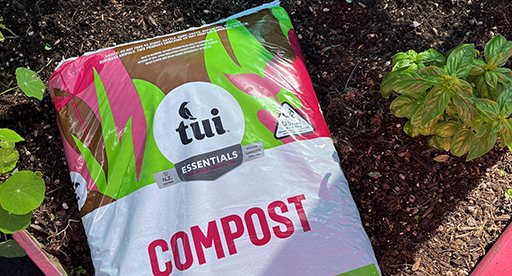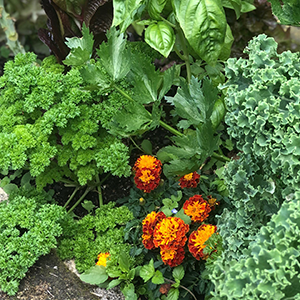
We’ve just finished a major harvest season and it’s time to refresh and rethink for the months ahead.
To help you start we’ve put together some tips on what to plant next and key considerations for when you’re planning.
Crop rotation
Crop rotation is the practice of not planting the same crops in the same place each season. Crops from the same families are more likely to be affected by the same pests and diseases, so this practice helps by disrupting their life cycle, and keeps your soil healthy. Crop rotation also reduces nutrient deficiencies in the soil, as some crops take up more of one nutrient than others.
If you don’t have the space to practice crop rotation it’s extra important to take the time to replenish the soil and nutrients used over summer. Dig in some Tui Organic Sheep Pellets or Tui Blood & Bone, along with good compost. Blend thoroughly and water in well to get all the goodies into the soil.
ROOT CROPS
It’s a good idea to not plant root crops where they have just been grown, e.g. don’t plant carrots where the potato crop has just finished. Both crops need phosphorus, and so that nutrient will be depleted. If you don’t have another spot to plant in you can replenish the soil with the addition of compost or sheep pellets and Tui Potato Food.
WHAT TO PLANT NEXT
If you’ve just pulled out heavy feedings crops, follow that with a light feeding crop.
Heavy feeders: brassicas, corn, celery, melons, cucumbers, zucchini, pumpkin, leafy greens, tomatoes, eggplant, capsicum, potatoes, chillies, leeks, onions, garlic.
Light feeders: peas, beans, broadbeans, beetroot, carrot, parsnip, radish. Plant lettuce, spinach or silverbeet, and any other leafy greens where beans and peas have just finished. The soil will have plenty of nitrogen from the legumes and their nitrogen fixing roots which will encourage lush green growth.
What to follow crops with through the seasons:
Lettuce: beans, carrots, cucumbers, squash, pumpkin, basil, Brussels sprout.
Potatoes: cabbage, kale, leeks, spring onion.
Peas: carrots, lettuce, spinach, silverbeet.
Garlic & onions: squash, pumpkin, swedes, tomatoes, capsicum, pak choi, bok choi.

companion planting
Use plants to encourage good bugs which in turn eat the bad bugs. Plant a mixture of flowers and herbs amongst veges and fruit trees to encourage a healthy diversity of insects to move into the garden. Make sure companions are planted at the same time as your edible crops to prevent insects from taking over the vege patch.
Some crops may still be producing a good amount of food, which is great! Plant around them - a punnet or two of salad veges can easily fit in under rows of beans and tomatoes. In pots and containers, remove summer crops and add in fresh bags of Tui Vegetable Mix, or mix in Tui Mini Sheep Pellets and Tui Compost to give tired summer soil a boost.
Post a comment
Starting a new growing season Comments
Learning a lot thanks. Lost my husband in October now my turn to grow and learn. Many thanks.
Jan Patterson
Always a pleasure to remind me what & when to attend to my garden.
Barrie Johnson
Always more to learn from here, thank you.
Glenyss Sharpe